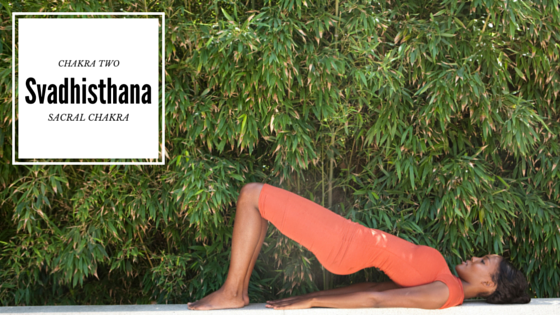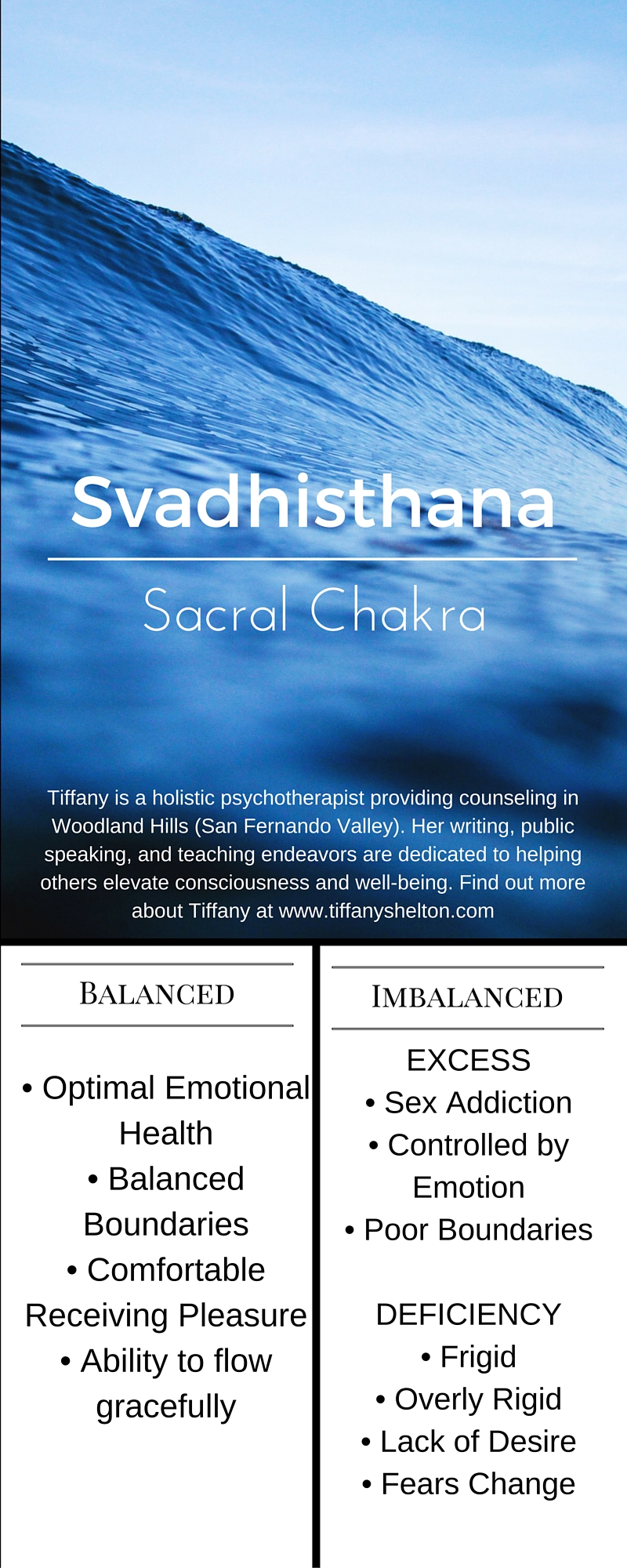Beginner’s Guide to Chakras: Part 2, Sacral Chakra
What are Chakras?
Have you ever heard someone mention chakras but never really knew exactly what it meant? Well you’re not alone, many people find them esoteric and elusive, and unfortunately miss out on all the benefits of knowing about chakras and how they work. Chakra literally means wheel, and represents energy “wheels”, along the spinal column. Ultimately the 7 chakra system is a philosophy related to human consciousness, behavior, and enlightenment. Each chakra represents a wheelhouse of propelling life energy (also called pranayama), going in and coming out, focused on 7 different domains of human psyche and existence. Chakra philosophy originates back 4,000 years ago in India, and has been incorporated into many traditions and philosophies including yoga, meditation, Ayurveda, and most recently within western psychology. This blog series serves to give you a beginner’s guide to the 7 main chakras most widely acknowledged.
Chakra Two: The Sacral Chakra, Svadhisthana
OVERVIEW
The second chakra is called Svadhisthana, or The Sacral Chakra. This energy force is housed below our navel and above our pubis bone and includes the sex organs, hips, and lower back. Each chakra is represented by a color, and the second chakra’s color is orange. It’s symbolic element is Water, symbolizing flowing emotion and pleasure only balanced by healthy boundaries and containers.
MAIN ISSUES
Within this wheelhouse emotional balance, pleasure, and creative flow are explored. Furthermore this chakra illuminateS how their shadow counterparts can be activated when this part of our lives is out of balance in ways such as guilt, poor boundaries, or even over indulgence. When we focus our attention on this chakra our intent is to evaluate how we contain and express our emotions, as well as how we react to our right to feel pleasure. Brene Brown, renown author and expert on shame, says that guilt (an imbalanced characteristic of the second chakra) is when we feel bad about something we did, and shame (an imbalanced characteristic of the third chakra) is when we feel bad about who we are. This speaks to how the second chakra evaluates our emotional responses to actions and behaviors. Within psychology one prominent theory (as well as many spiritual teachings preceding this theory), Cognitive Behavioral Psychology, explains the connection of our thoughts, feelings, and actions. Specifically it explains how our emotions are a direct response to our thoughts and actions and the sacral chakra’s energy reflects our ability to manage these reactions. We can use the second chakra’s symbolic element of water as a metaphor for emotion.
THE GOAL OF BALANCING THIS PART OF OUR LIVES
The goal is to contain the river of emotion so that it not too restricted that it does not flow, but also making sure that we don’t allow it to overflow and flood us. Similarly the sex organs contained within this chakra represent pleasure and our unique effort to allow ourselves pleasure in a balanced way. Finally, like water, this chakra’s energy is affected by our ability to move gracefully with an organic flow. Symbolized by the movement of the hips and pelvis, by addressing sacral chakra issues we hone our ability to express emotion and experience pleasure using graceful movement.
BALANCED VERSUS IMBALANCED
Each wheel can either live in balance or imbalance, and this is reflected by our behaviors, thoughts, emotions, and traumas related to each chakra’s wheelhouse. Take a look at how our lives are affected when the sacral chakra’s energy is in balance (meaning the energy going into the wheel is balanced by what is coming out) versus when it is imbalanced.
Balancing the Chakras
If you find that you identify with some of the qualities of the second chakra when it is imbalanced here are some things you can do to bring balance to this chakra:
Meditation:
- Try guided meditations focused on emotional well-being and coping with difficult emotions.
- Set an intention for your meditation to expand your ability to experience pleasure.
Yoga Poses:
- Downward Facing Dog Pose (Containing Pose)
- Seated Boat Pose (Containing Pose)
- Bound Angle Butterfly Pose (Opening Pose)
- Pigeon Pose (Opening Pose)
Psychotherapy:
- Working on your relationship to experiencing pleasure
- Processing trauma to the sacral chakra such as sexual or emotional abuse
*** I offer an 8 week Mindfulness Based Therapy Program that addresses such issues, click here for more information ***
– Tiffany is a holistic psychotherapist providing counseling in Woodland Hills (West Valley). She specializes in women’s empowerment related to self-esteem, self-confidence, and relationship issues. Her writing, public speaking, and teaching endeavors are dedicated to helping others elevate consciousness and well-being. Find out more about Tiffany by clicking here






